Prickly pears, also known as cactus fruits, are a unique and vibrant addition to the world of fruits. With their prickly exterior and sweet, juicy flesh, these fruits have gained popularity in recent years. But, like any other fruit, prickly pears have their own season. Have you ever wondered when is the best time to enjoy these delightful fruits? In this article, we will explore the answer to the question “When are prickly pears in season?” and provide you with valuable insights into the ideal time to indulge in the bounty of prickly pear season.
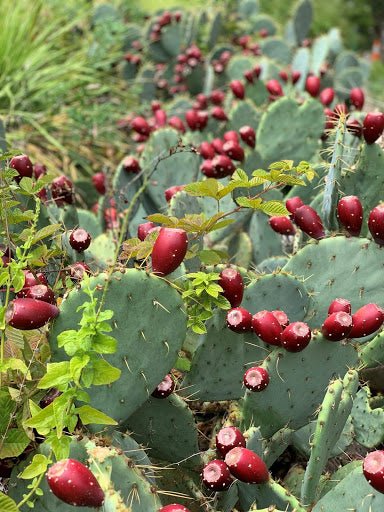
Overview of Prickly Pears
Prickly pears are a unique and versatile fruit that belong to the cactus family. Also known as cactus pears, these fruits are known for their vibrant colors, sweet and slightly tangy flavor, and of course, their prickly spines. Prickly pears are native to the Americas but have gained popularity worldwide due to their delicious taste and various uses. As a consumer, it is essential to have a good understanding of the characteristics, cultivation, popular uses, seasonality, harvesting, storing, and nutritional benefits of prickly pears to fully appreciate and enjoy this fascinating fruit.
Characteristics of Prickly Pears
Prickly pears have a distinct appearance. They are oval or pear-shaped fruits covered with small, sharp spines or glochids. The spines protect the fruit from predators, and caution should be exercised when handling them. The outer skin of the prickly pear can be yellow, green, or red, depending on the variety. Beneath the spines, the flesh of the fruit is juicy and sweet, with numerous small edible seeds dispersed throughout. The taste of prickly pears can be compared to a combination of watermelon, pear, and citrus flavors.
Cultivation of Prickly Pears
Prickly pears thrive in warm and arid regions, making them well-suited to grow in areas with desert-like conditions. The cactus plants that produce prickly pears are highly adaptable and can withstand extreme temperatures and drought. They can be cultivated in various types of soil, ranging from sandy to rocky, as long as the soil is well-drained. Prickly pears can be propagated from seeds or by planting segments of the cactus pads, known as cladodes. With proper care and maintenance, these hardy plants can produce abundant fruits year after year.
Popular Uses of Prickly Pears
Prickly pears have a wide range of culinary uses. The sweet and refreshing flesh of the fruit can be enjoyed fresh, either on its own or added to salads, smoothies, and desserts. Prickly pear juice is also a popular beverage, loved for its vibrant color and refreshing taste. In addition to their culinary uses, prickly pears have medicinal and cosmetic applications. The fruits are rich in antioxidants, vitamins, and minerals, which contribute to their potential health benefits. Prickly pear extract is used in skincare products for its hydrating and soothing properties. The fibrous pads of the cactus plant can be utilized in making textiles, dyes, and even biofuels.
Factors Affecting Seasonality of Prickly Pears
The seasonality of prickly pears is influenced by various factors, including geographical factors, climate factors, and variety factors.
Geographical Factors
Prickly pears are predominantly cultivated in regions with suitable climates and soil conditions. This fruit is native to the Americas, and different varieties can be found throughout the continent. However, through globalization and human intervention, prickly pears have also been introduced to other parts of the world, such as Europe, Asia, Africa, and Australia. The availability and seasonality of prickly pears can vary depending on the region due to differences in climate and growing conditions.
Climate Factors
Climate plays a significant role in determining the seasonality of prickly pears. These fruits thrive in warm, arid climates with long hours of sunlight. They can tolerate extreme temperatures, both high and low, but prefer temperatures between 77°F (25°C) and 95°F (35°C) for optimal growth and fruit production. Prickly pears require a specific amount of rainfall to survive, but excessive moisture can be detrimental to their growth. Therefore, regions with dry or desert-like climates, such as the southwestern United States, Mexico, and parts of South America, are ideal for prickly pear cultivation.
Variety Factors
There are various species and cultivars of prickly pears, each with its own unique characteristics and seasonality. Some varieties produce fruits that ripen earlier in the year, while others have a later harvest season. The choice of variety planted by farmers and availability in different regions can contribute to the seasonality of prickly pears. Additionally, advances in cultivation techniques, such as the use of hybrid varieties and controlled environments, have expanded the possible growing seasons for prickly pears in some areas.
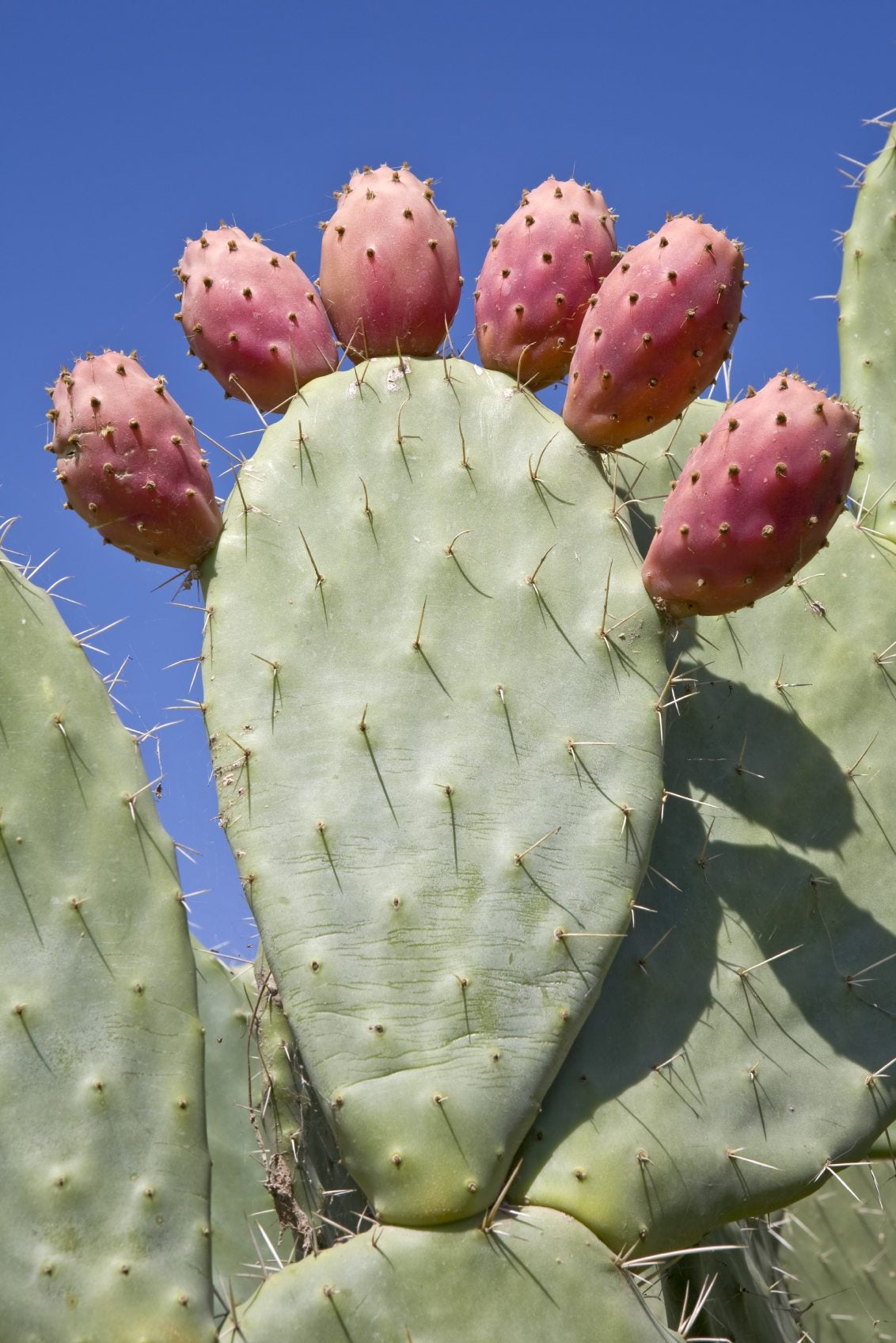
Prickly Pear Seasonality by Region
The seasonality of prickly pears can vary significantly from one region to another. Let’s explore the seasonality of prickly pears in different continents and countries.
North America
In North America, prickly pears are primarily cultivated in the southwestern United States and Mexico. The harvest season for prickly pears in this region typically starts in late summer, around August, and extends through early fall, until October. However, the exact timing can vary depending on the specific location and climate conditions. In certain areas of the Southwest, wild prickly pears can also be found, and their fruiting season coincides with the cultivated varieties.
Central America
Central American countries, such as Guatemala, Honduras, and El Salvador, have favorable climates for growing prickly pears. The seasonality of prickly pears in these regions is similar to that of the southwestern United States and Mexico. The fruits usually mature and become ready for harvest between late summer and early fall.
South America
In South America, prickly pears can be found in countries like Argentina, Chile, and Peru. The harvest season for prickly pears in these regions varies depending on the specific location and climate. Generally, the fruiting season occurs during the spring and summer months, which is typically from October to February in the Southern Hemisphere.
Europe
Prickly pears are not native to Europe but have been introduced to various Mediterranean countries, such as Italy, Spain, and Greece. The seasonality of prickly pears in Europe is influenced by the Mediterranean climate, characterized by hot, dry summers and mild, wet winters. The fruiting season usually begins in late summer or early autumn, around August or September, and can last until the first frost.
Asia
Asia is home to a diverse range of climates, and prickly pears can be grown in certain regions, including India, Israel, and parts of the Middle East. The seasonality of prickly pears in Asia can vary depending on the local climate and the specific variety grown. In general, the fruiting season occurs during the hot summer months, between June and September.
Africa
In Africa, prickly pears are widely cultivated in countries such as Morocco, Tunisia, and South Africa. The exact seasonality of prickly pears in Africa can vary due to the continent’s diverse climates. In some regions, the fruiting season occurs during the summer months, while in others, it can extend into the autumn or winter.
Australia
Australia has various climates, ranging from tropical in the north to temperate in the south. Prickly pears can be found in certain parts of Australia, particularly in arid regions. The fruiting season typically occurs during the warmer months of the year, from late spring to early autumn, which is from October to April in the Southern Hemisphere.
Prickly Pear Seasonality by Climate
In addition to regional differences, the seasonality of prickly pears can also be influenced by different climate types. Let’s explore how the climate affects the seasonality of prickly pears in different regions.
Tropical Climate
In regions with a tropical climate, such as parts of Central and South America, Africa, and Asia, the seasonality of prickly pears can differ from other climates. In these areas, the fruiting season often coincides with the rainy season, which is typically during the summer months. The abundant rainfall helps stimulate the growth and development of prickly pears, leading to a bountiful harvest during this time.
Mediterranean Climate
Regions with a Mediterranean climate, such as countries surrounding the Mediterranean Sea and parts of California, experience hot, dry summers and mild, wet winters. Prickly pears are well-suited to this climate, and their fruiting season aligns with the late summer and early autumn months. The warm temperatures and moderate rainfall provide optimal conditions for the growth and ripening of prickly pears.
Desert Climate
Desert regions, including the southwestern United States and parts of Mexico, are characterized by extreme temperatures and minimal rainfall. Prickly pears thrive in these arid conditions and have adapted to withstand the harsh climate. The fruiting season of prickly pears in desert climates usually occurs during the late summer and early fall when temperatures are at their peak. The scarcity of water resources and high temperatures contribute to the unique flavor and sweetness of desert-grown prickly pears.
Subtropical Climate
Subtropical climates, found in regions like Florida, parts of Mexico, and certain areas in Australia, have relatively mild winters and hot, humid summers. Prickly pears can be grown in these climates, and their fruiting season typically occurs during the warmer months, from spring to early autumn. The higher humidity levels and abundant rainfall in subtropical regions can impact the growth and size of the prickly pear fruits.
Temperate Climate
Temperate climates, such as those found in Europe, parts of the United States, and certain regions in Australia, have distinct seasons with moderate temperatures and rainfall throughout the year. The seasonality of prickly pears in temperate climates is influenced by the specific variety, local climate conditions, and cultivation practices. In general, the fruiting season occurs in late summer or early autumn, providing consumers with an opportunity to enjoy these unique fruits before the arrival of colder weather.
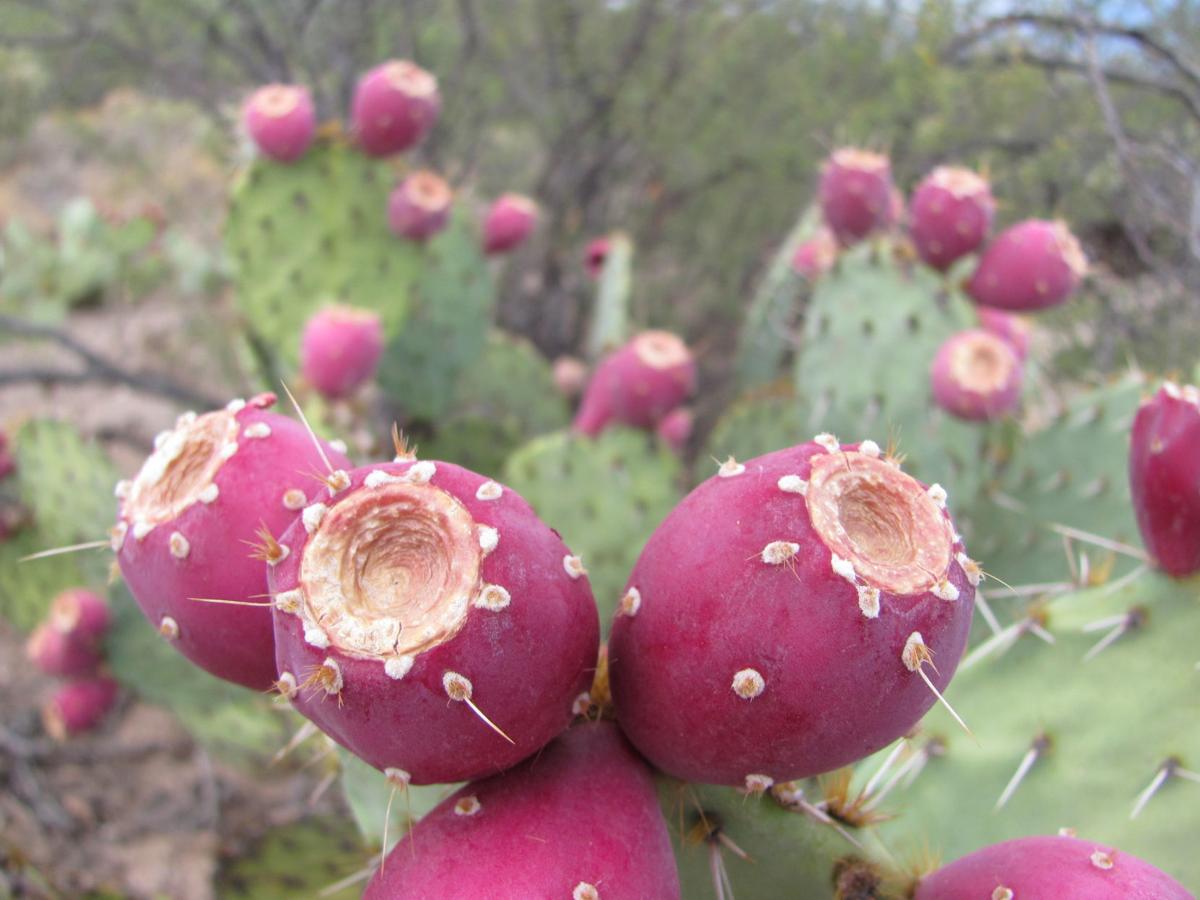
Harvesting Prickly Pears
Once the prickly pears have reached their optimal ripeness, it is important to harvest them correctly to ensure maximum flavor and quality.
Identifying Ripe Prickly Pears
Determining the ripeness of prickly pears can be a daunting task, especially for beginners. Ripe prickly pears will have vibrant and even coloration on the skin, with no signs of shriveling or discoloration. The spines or glochids may also appear less menacing, indicating that the fruit is mature. When gently pressed, ripe prickly pears should have a slight give, similar to a ripe avocado or peach. It is essential to handle the fruits with care and wear protective gloves to avoid injury from the spines.
Proper Techniques for Harvesting
To harvest prickly pears, it is crucial to use the right tools and techniques. A pair of tongs or pliers can be handy for safely gripping and removing the prickly pears from the cactus pads. Alternatively, a long knife or pruning shears can be used to cut the fruit from the pad, ensuring minimal damage to the plant. It is important to handle the fruits with care to avoid piercing the skin with the spines. If the prickly pears will be used for juice or other recipes, the spines and skins can be removed by brushing the fruit with a stiff brush or sanding them off.
Safety Precautions
When harvesting prickly pears, it is essential to take safety precautions to prevent injuries. The spines or glochids of the cactus can cause painful irritation and can be quite challenging to remove if they become embedded in the skin. It is recommended to wear thick work gloves or use tongs or pliers to handle the fruits. Use caution when pruning or handling the cactus pads, as the spines can easily detach and become lodged in the skin. If any spines pierce the skin, they should be carefully removed using tweezers or adhesive tape. It is advisable to wash the harvested fruits thoroughly to remove any remaining spines before consumption.
Storing and Preserving Prickly Pears
To enjoy the delicious flavors of prickly pears beyond their season, proper storage and preservation techniques can be employed.
Storing Prickly Pears
Freshly harvested prickly pears should be consumed as soon as possible for the best flavor and texture. However, if immediate consumption is not possible, the fruits can be stored in a cool, dry place away from direct sunlight. Prickly pears can be left at room temperature for a few days or refrigerated for up to two weeks. It is important to handle the fruits gently to avoid bruising or damage to the skin. If the prickly pears have been peeled or cut, they should be wrapped in plastic wrap or stored in an airtight container to prevent them from drying out.
Preserving Prickly Pears
To extend the shelf life of prickly pears and enjoy their flavors year-round, various preservation methods can be employed. Prickly pears can be juiced and stored in the freezer in ice cube trays or containers for future use in smoothies or other recipes. The fruits can be made into delicious jams, jellies, or syrups by cooking them down with sugar and other flavorings. These preserved products can be stored in sterilized jars or air-tight containers for several months. Prickly pears can also be dehydrated to create dried fruit snacks or used in baking recipes.
Prickly Pear Products
Aside from fresh and preserved fruits, there are numerous prickly pear products available in the market. These include prickly pear juice, nectar, candies, teas, and even alcoholic beverages such as cactus pear liqueur or cocktails. Prickly pear-based skincare products, such as lotions, creams, and soaps, are also popular for their hydrating and soothing properties. The versatility of prickly pears extends to various culinary and cosmetic applications, allowing consumers to enjoy their unique flavors and benefits in different forms.
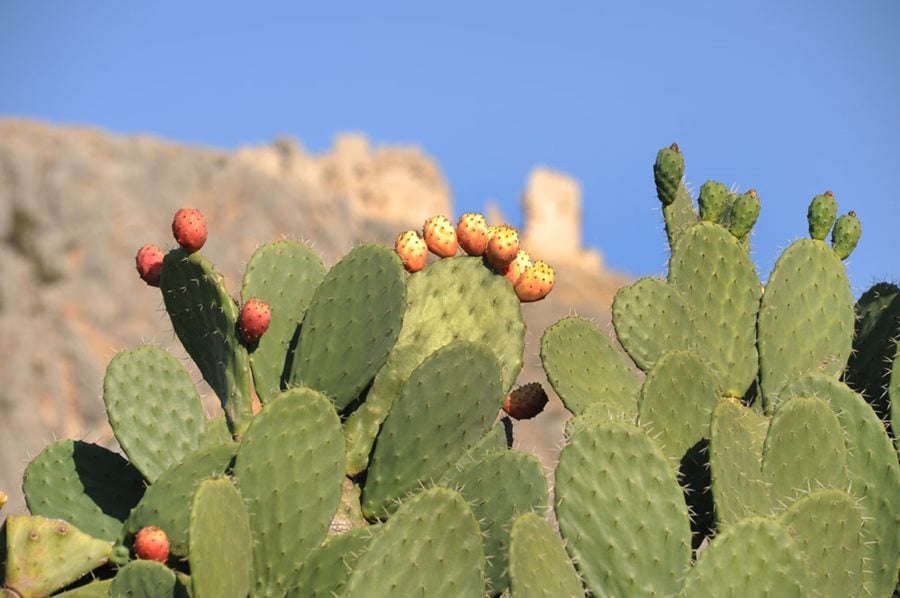
Local Availability of Prickly Pears
Finding fresh prickly pears can be challenging in some areas, but there are several sources where they are commonly available.
Farmers Markets
Farmers markets are excellent places to find fresh, locally grown prickly pears during their season. Local farmers often bring their harvests directly to these markets, providing consumers with the opportunity to support local agriculture and enjoy the freshest fruits available. It is advisable to visit farmers markets during the prickly pear season to ensure the best selection and quality.
Specialty Stores
Specialty stores or gourmet food markets may carry exotic or unique fruits, including prickly pears. These stores often prioritize high-quality produce and provide a range of specialty products not commonly found in regular supermarkets. Prickly pears may be available for purchase either individually or in packaged quantities, depending on the store’s selection.
Community Gardens
Some community gardens or urban farms dedicate space to the cultivation of prickly pears. These gardens often encourage community involvement and offer the opportunity to participate in harvesting events or workshops focused on prickly pear cultivation and use. Community gardens can be a valuable resource for accessing fresh, locally grown prickly pears and learning more about their cultivation.
Wild Harvesting
In certain regions, wild prickly pears can be found growing in natural habitats. While wild prickly pears may not be as readily available as cultivated varieties, they offer a unique foraging experience for those interested in exploring the outdoors. It is important to research and adhere to local regulations regarding wild harvesting and obtain permission from landowners where necessary.
Seasonal Recipes with Prickly Pears
Prickly pears can be incorporated into a variety of delicious recipes, allowing you to fully enjoy their unique flavors. Here are a few seasonal recipe ideas to inspire your culinary skills:
Prickly Pear Smoothie
Blend ripe prickly pears with your favorite fruits, such as mango, pineapple, or banana, along with a splash of citrus juice and a handful of ice. This refreshing prickly pear smoothie is packed with vitamin C and antioxidants, making it the perfect way to start your day or cool down on a hot afternoon.
Prickly Pear Salad
Create a vibrant and flavorful salad by combining fresh prickly pear slices with mixed greens, crumbled feta cheese, toasted nuts, and a light balsamic dressing. The sweet and tangy flavors of the prickly pears complement the other ingredients, resulting in a refreshing and visually appealing dish.
Prickly Pear Jam
Transform prickly pears into a delectable jam that can be enjoyed year-round. Cook the peeled and diced fruit with sugar, lemon juice, and a pinch of cinnamon until it reaches a thick, spreadable consistency. This homemade prickly pear jam can be enjoyed on toast, as a topping for yogurt, or swirled into your favorite desserts.
Prickly Pear Salsa
Add a unique twist to traditional salsa by incorporating diced prickly pears, tomatoes, onions, jalapenos, cilantro, lime juice, and a touch of honey. This prickly pear salsa pairs well with grilled meats, fish tacos, or as a zesty dip for tortilla chips. The sweet and tangy flavors of the prickly pears bring a delightful and unexpected element to this classic recipe.
Prickly Pear Desserts
Indulge your sweet tooth with a prickly pear-infused dessert. From prickly pear sorbet and gelato to prickly pear cheesecake or tarts, the possibilities are endless. Prickly pears can be used to add a burst of color and flavor to a wide range of desserts, providing a unique and tropical twist to your favorite treats.
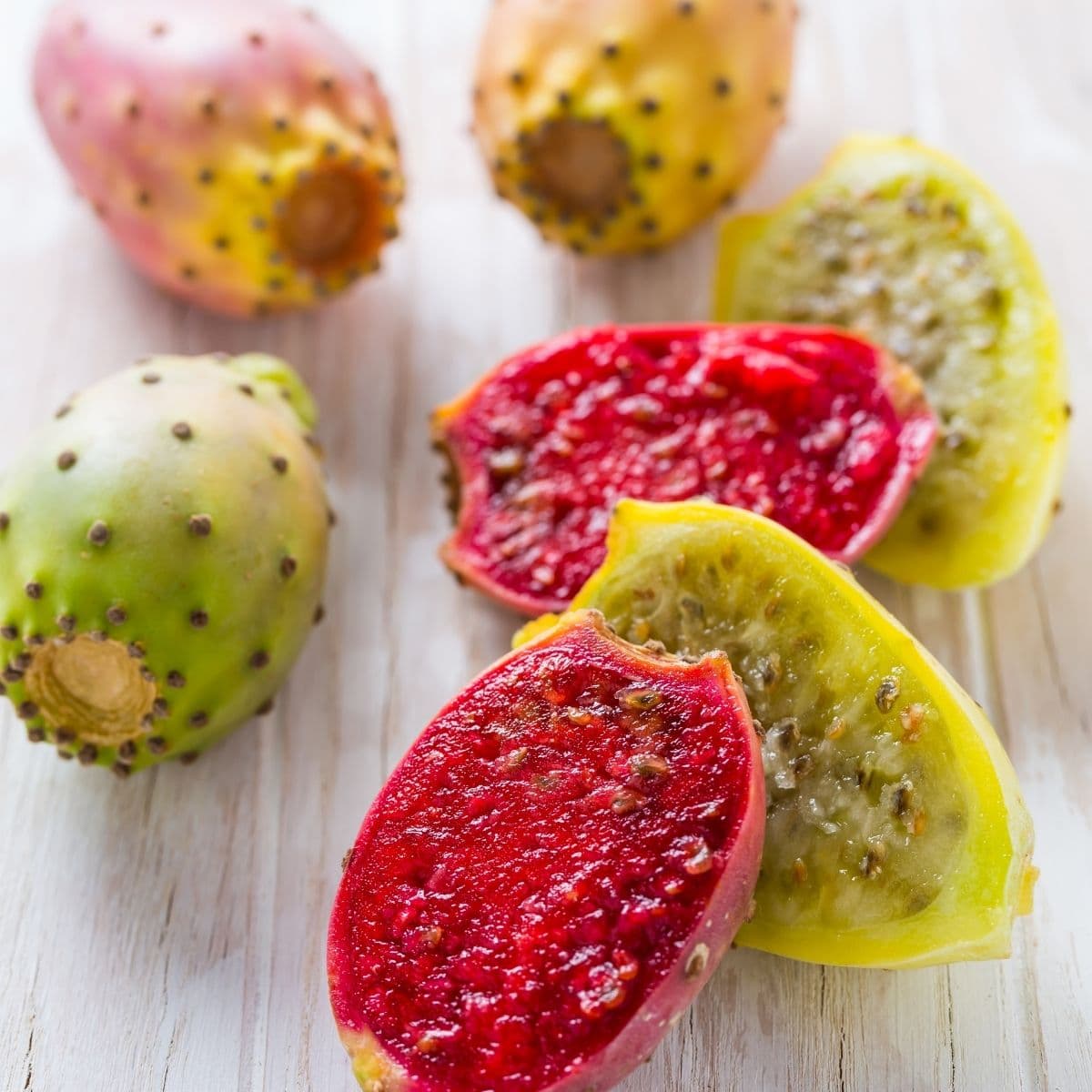
Nutritional Benefits of Prickly Pears
In addition to their delicious taste and versatility in the kitchen, prickly pears offer various nutritional benefits that can support a healthy lifestyle.
Vitamins and Minerals
Prickly pears are packed with essential vitamins and minerals. They are an excellent source of vitamin C, which is essential for immune health, collagen synthesis, and antioxidant protection. Prickly pears also contain significant amounts of vitamin E, which promotes skin health and protects against oxidative damage. Additionally, prickly pears are rich in potassium, magnesium, and calcium, which are vital for maintaining proper hydration, heart health, and bone strength.
Antioxidant Content
Antioxidants are compounds that help combat oxidative stress and reduce the risk of chronic diseases. Prickly pears are a rich source of antioxidants, including flavonoids, betalains, and vitamin C. These antioxidants help neutralize harmful free radicals in the body, promoting overall well-being and potentially reducing the risk of certain diseases, such as heart disease and certain types of cancer.
Fiber Content
Fiber is an essential nutrient that aids digestion, promotes satiety, and supports a healthy weight. Prickly pears are an excellent source of dietary fiber, both soluble and insoluble. The fiber content in prickly pears can help regulate blood sugar levels, prevent constipation, and support a healthy digestive system.
Potential Health Benefits
In addition to their nutritional profile, prickly pears have been associated with various potential health benefits. Some studies suggest that consuming prickly pear extract or juice may help lower cholesterol levels, reduce inflammation, and improve blood sugar control. The antioxidants present in prickly pears may also have anti-inflammatory properties, which can be beneficial for overall health. However, further research is needed to fully understand the impact of prickly pears on specific health conditions.
Conclusion
Prickly pears are a fascinating fruit that offers a delightful combination of flavors, versatility in the kitchen, and potential health benefits. Understanding the seasonality, cultivation, harvesting techniques, and popular uses of prickly pears can enhance your appreciation for this unique fruit. Whether you enjoy fresh prickly pears during their peak season, explore the vast range of prickly pear products, or indulge in seasonal recipes, there are countless ways to savor the flavors and benefits of prickly pears throughout the year. So, next time you come across these vibrant fruits, don’t hesitate to embrace them and embark on a prickly pear adventure.



